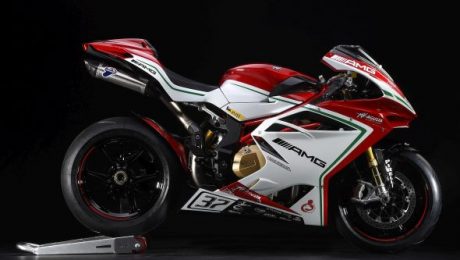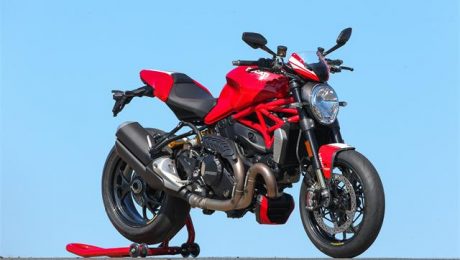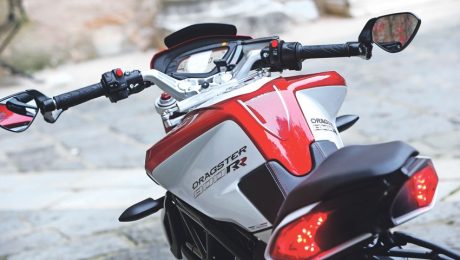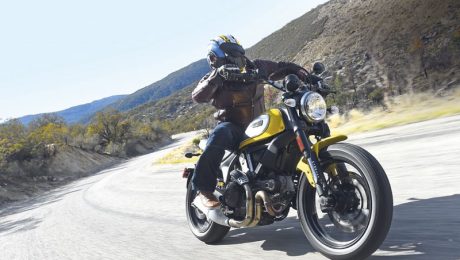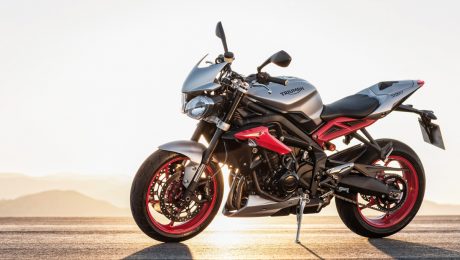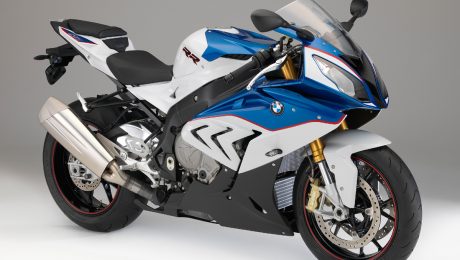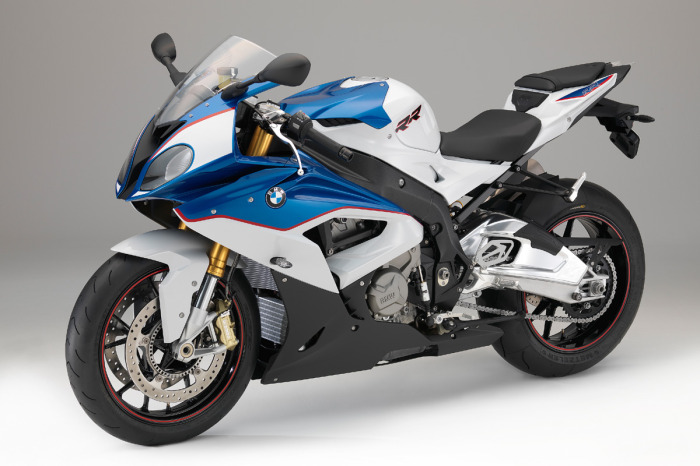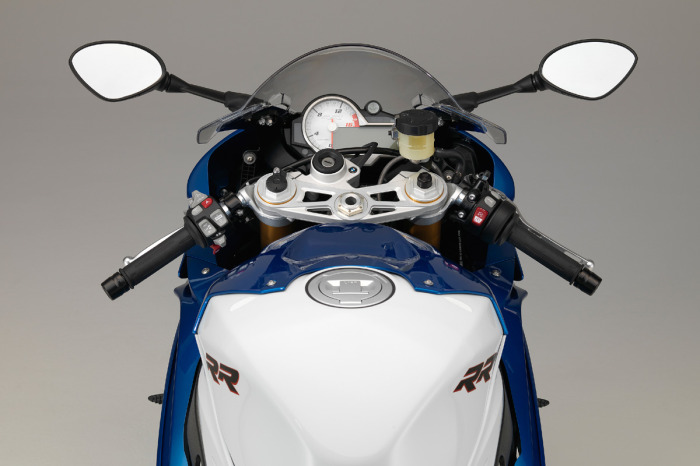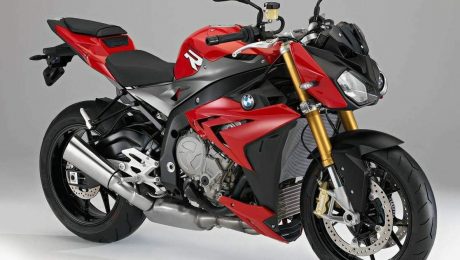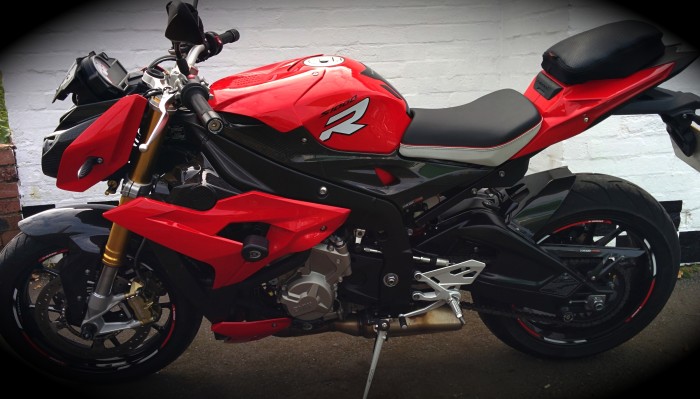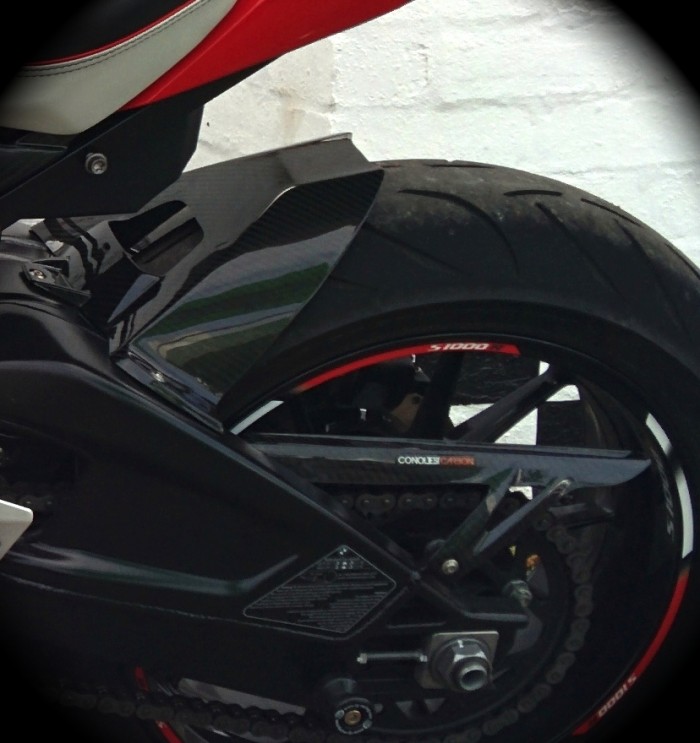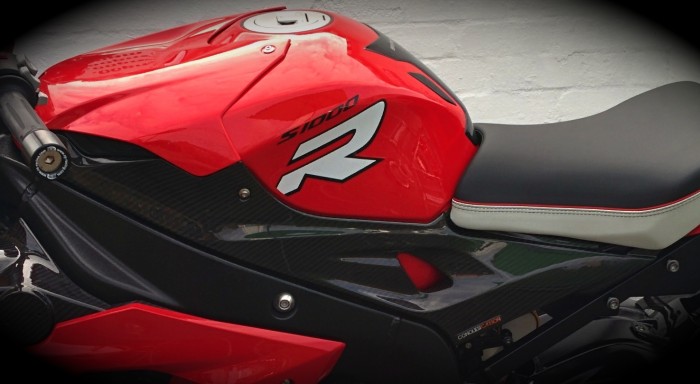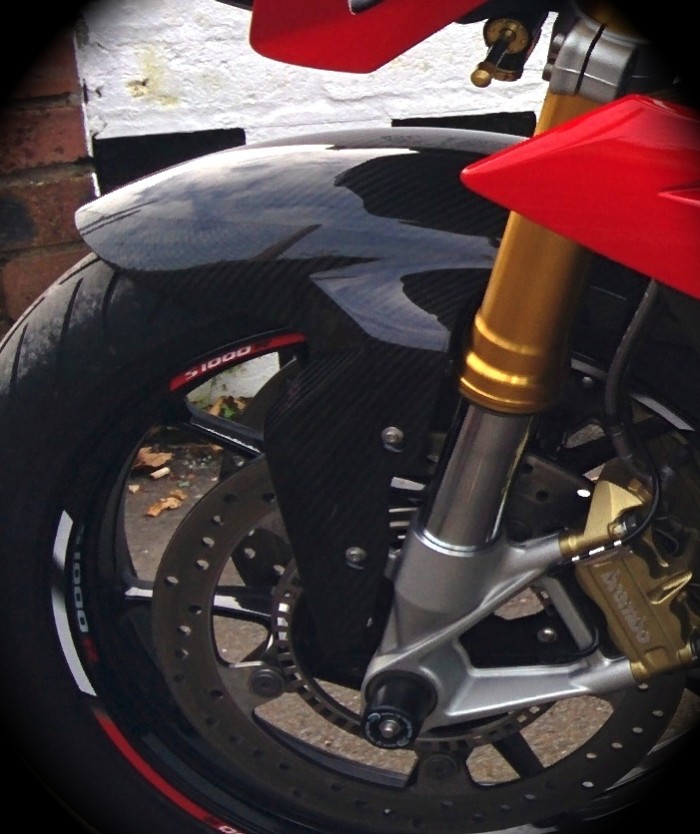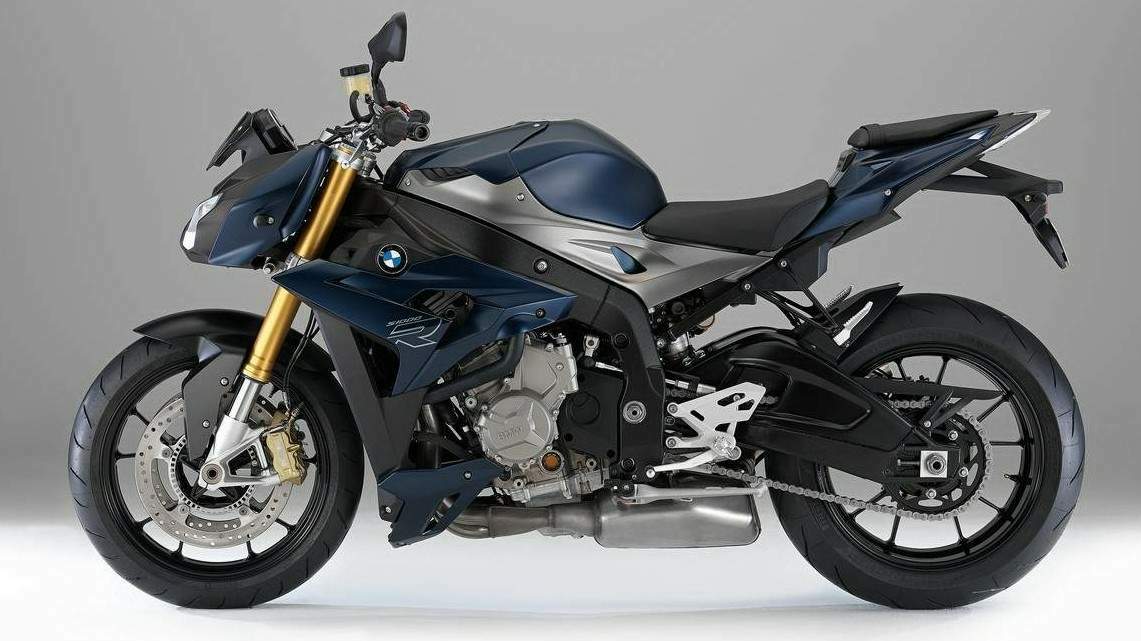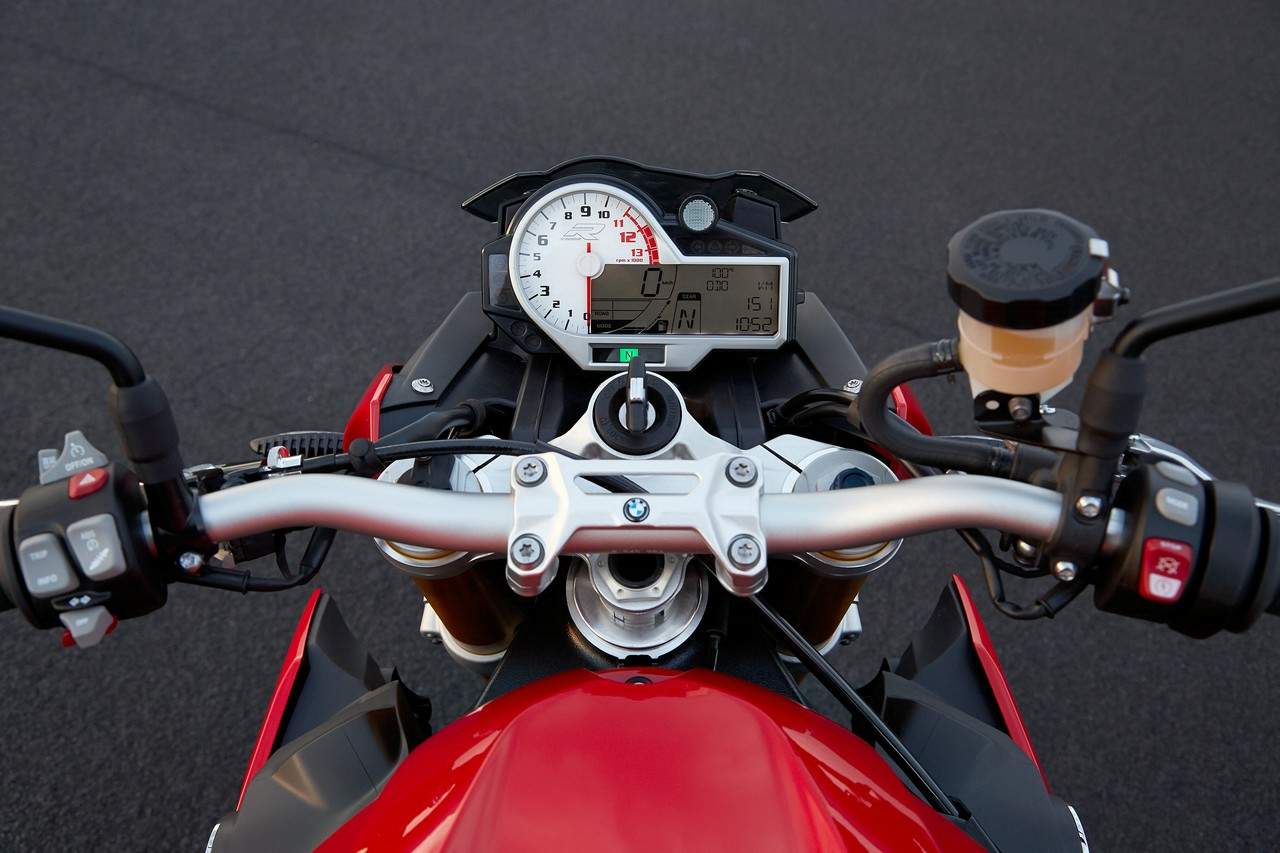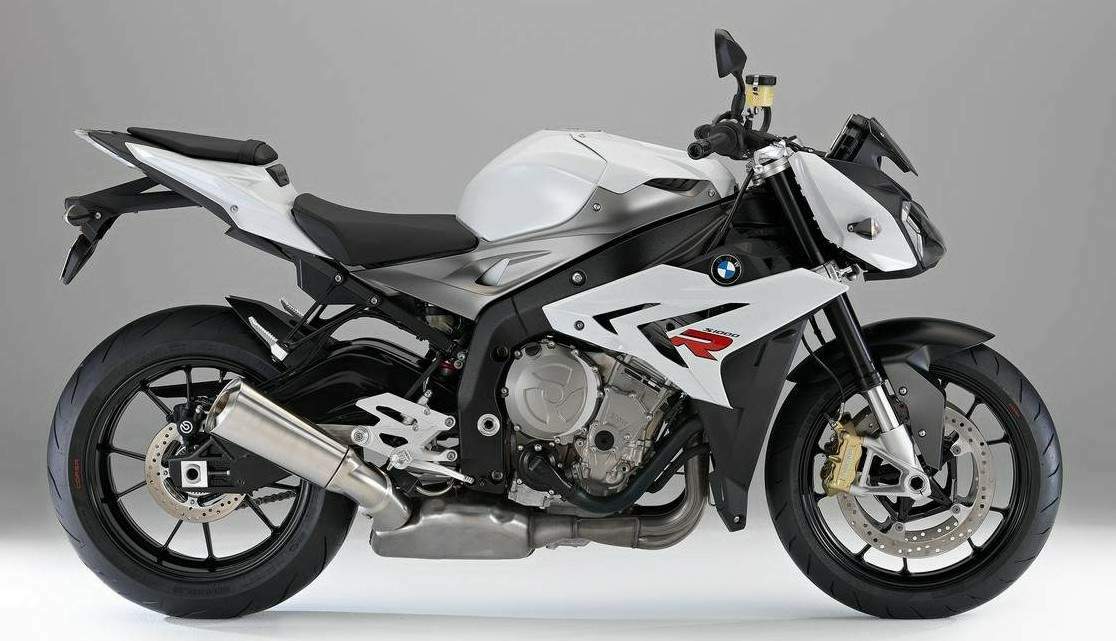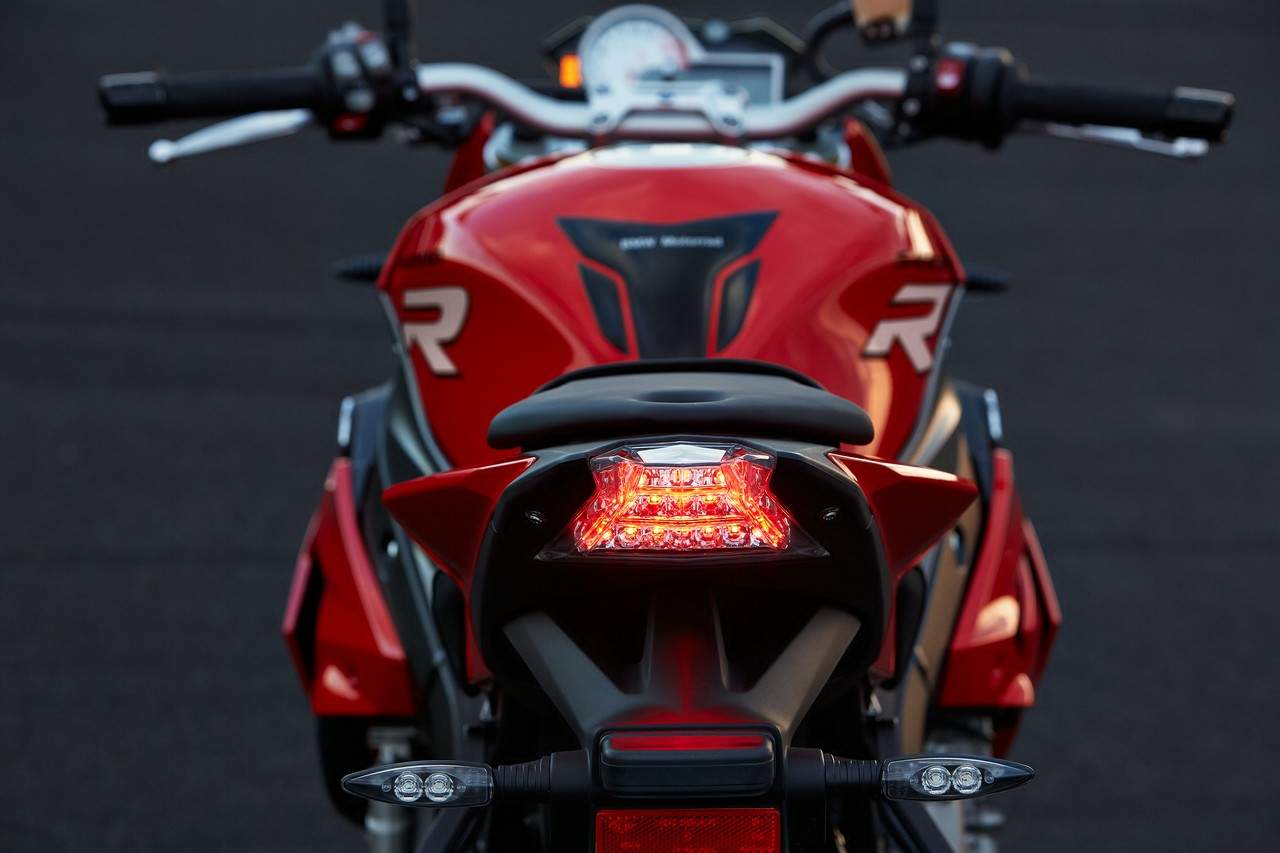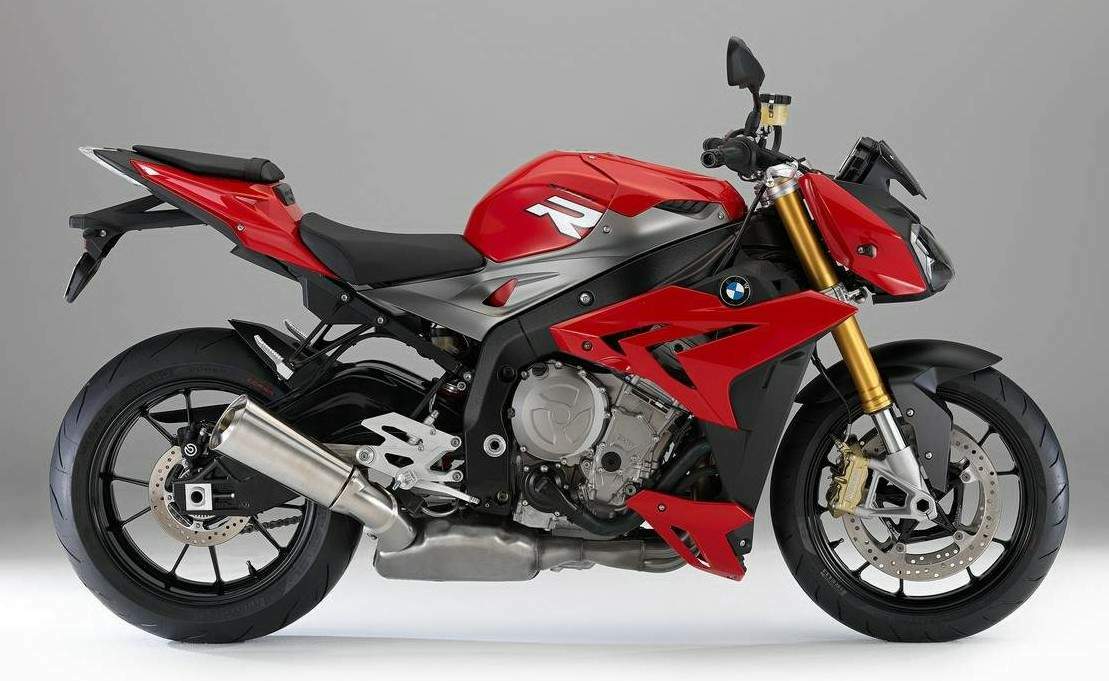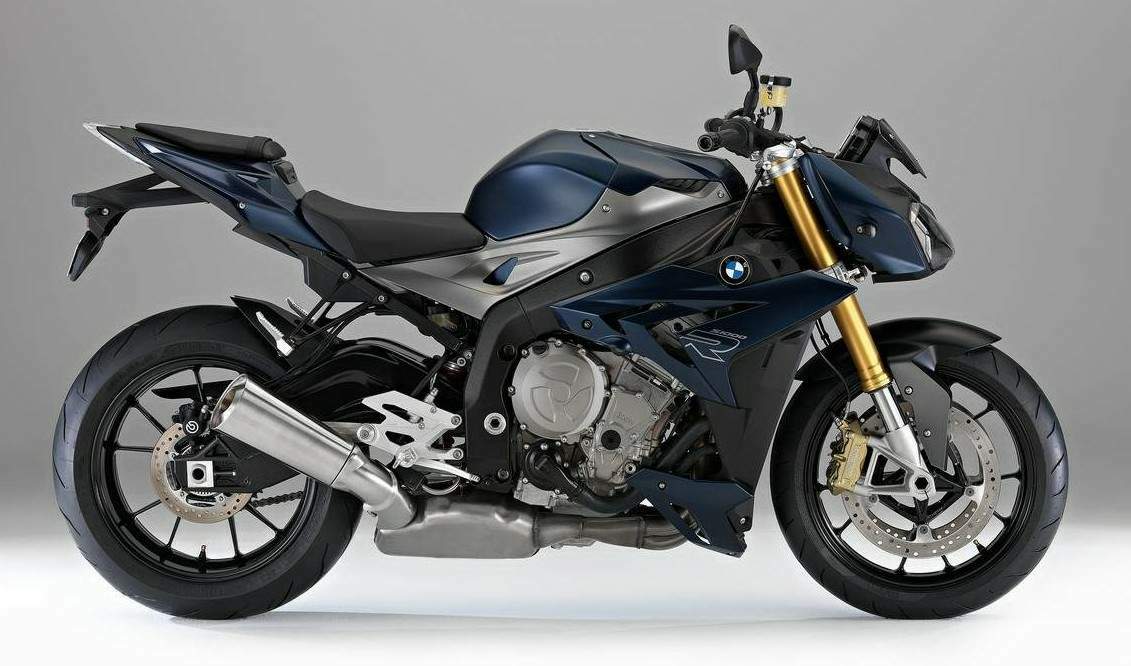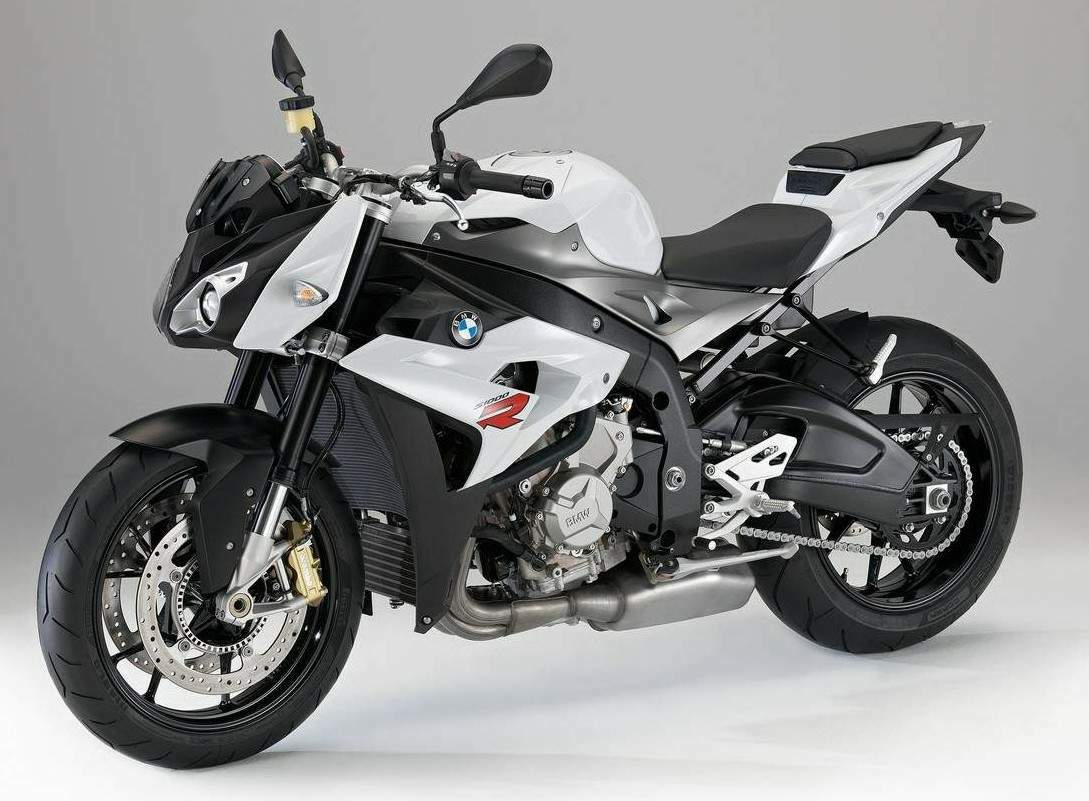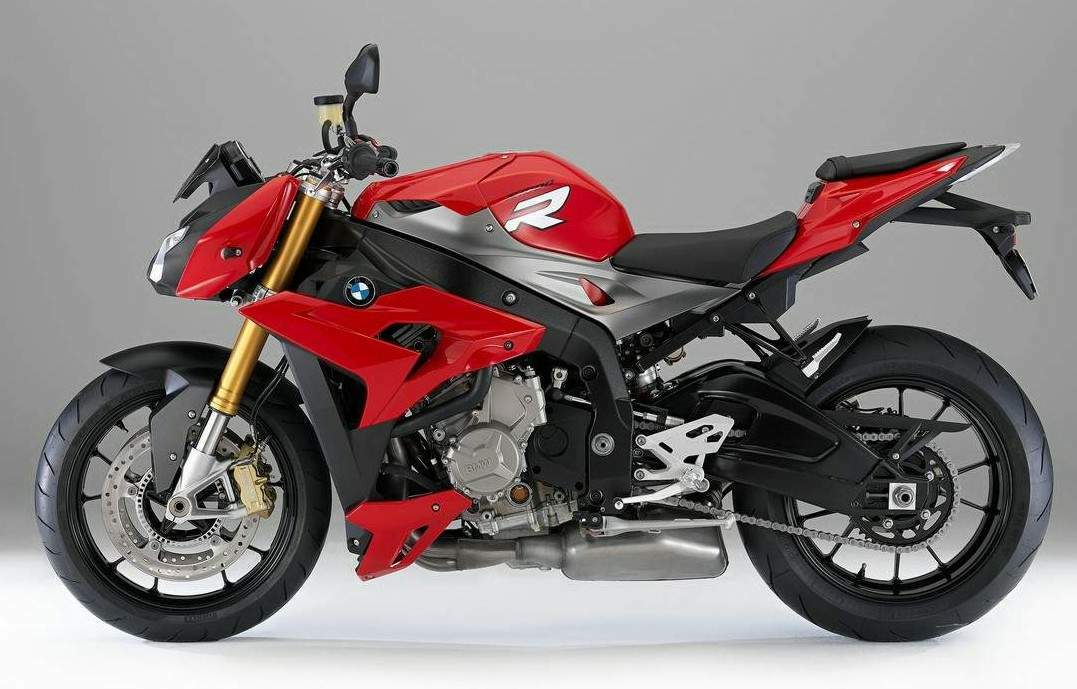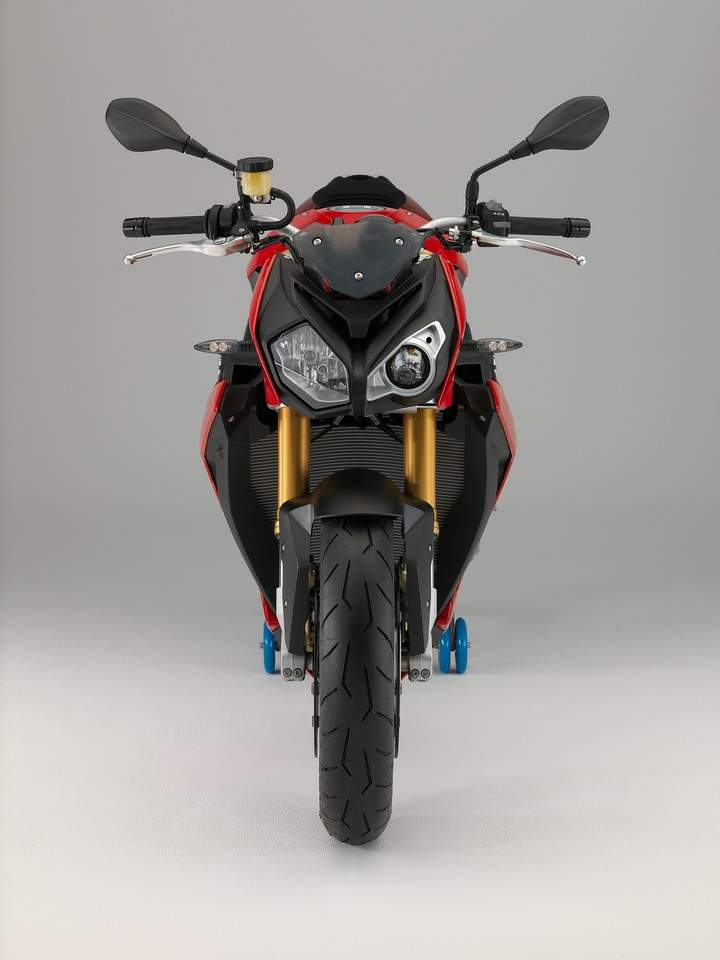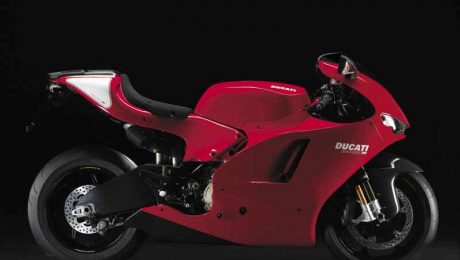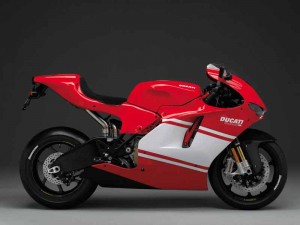Ducati Streetfighter V4 V4S 2020 Specifications
Ducati Streetfighter V4 V4S 2020 Specifications
New Streetfighter V4: The Fight Formula
Ducati Streetfighter V4 V4S 2020 Specifications
Panigale V4 stripped of the fairings, with a high and wide handlebar, 178 Kg powered by 1.100 cc Desmosedici Stradale delivering 208 Hp hold at bay by biplane wings and a complete electronic package.
This is the “Fight Formula”. This is the Streetfighter V4:
Shop now for the latest Ducati Streetfighter V4 V4S performance parts
Ducati Streetfighter V4 Promo Video
OMG this New Ducati Streetfighter V4 is a weapon………WANT WANT WANT #Ducati #streetfighterv4 #weapon #beast
Gepostet von Conquest Racing Ltd – Motorcycle Performance Parts am Mittwoch, 23. Oktober 2019
-
The 2020 Ducati Streetfighter V4 was just launched at the Ducati World Premiere 2019.
-
It has 208 bhp, 122.6 Nm, and weighs only 178 kg dry.
-
There are the standard and “S” models.
The most anticipated bike of the year, the 2020 Ducati Streetfighter V4 was just launched at the Ducati World Premiere 2019.
And as promised by the manufacturer, the bike is a powerhouse that would scare off sportbikes. In case you missed the teaser video, the 1100cc Desmosedici Stradale engine punches out an unholy (for a naked bike) 208 bhp at 12,500 RPM, 122.6 Nm of torque of 11,500 RPM.

If those figures are awesome, think about the weight: 178 kg dry. That gives the bike a 1.17 bhp/kg power-to-weight ratio, which some sportbikes could only envy. As a matter of fact, Ducati aimed for 25% more power over their closest competitor.
However, there’s a Streetfighter V4 S model and it produces 216 bhp!
The full specs are just filtering through at the moment. But among other things is the electronics suite which is shared with the Panigale V4.
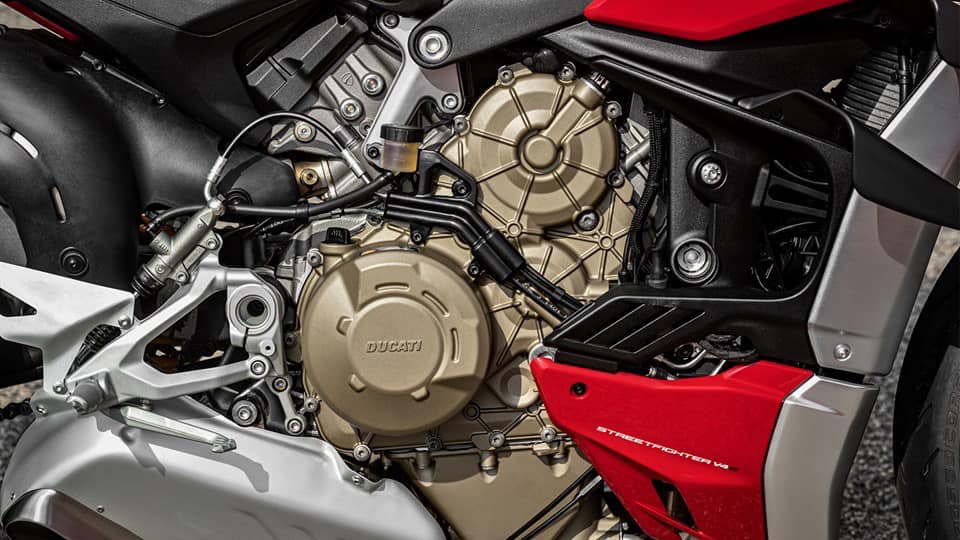
And just like the Panigale V4 S, the Streetfighter V4 S uses the amazing Ohlins Smart EC 2.0 suspension.
But it has something which only the Panigale V4 R has: Winglets. Make that twice the V4 R’s winglets. The Streetfighter has four of them!

Ducati also released the prices. The standard bike costs €19,990 while the “S” is at €22,990.
Stay tuned as we will bring you the full specifications of the bike later.
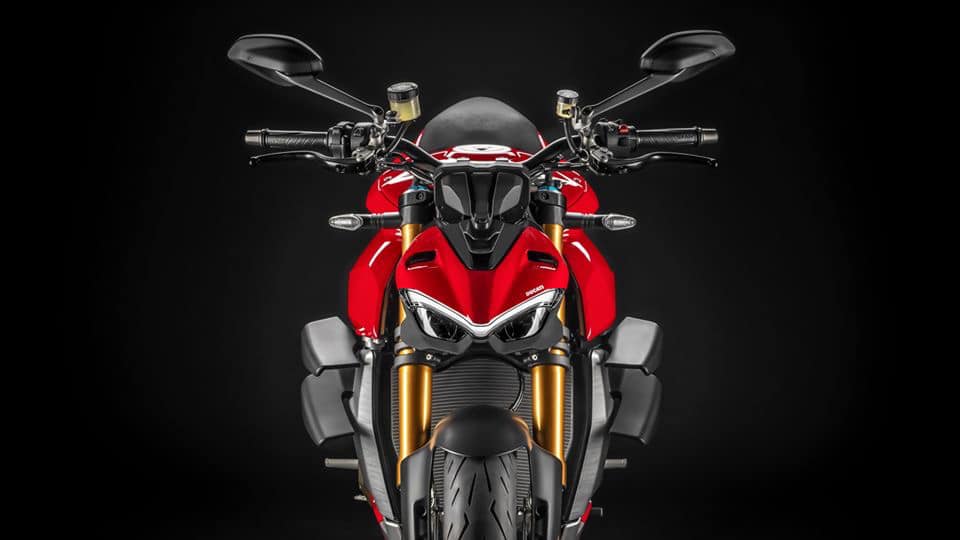
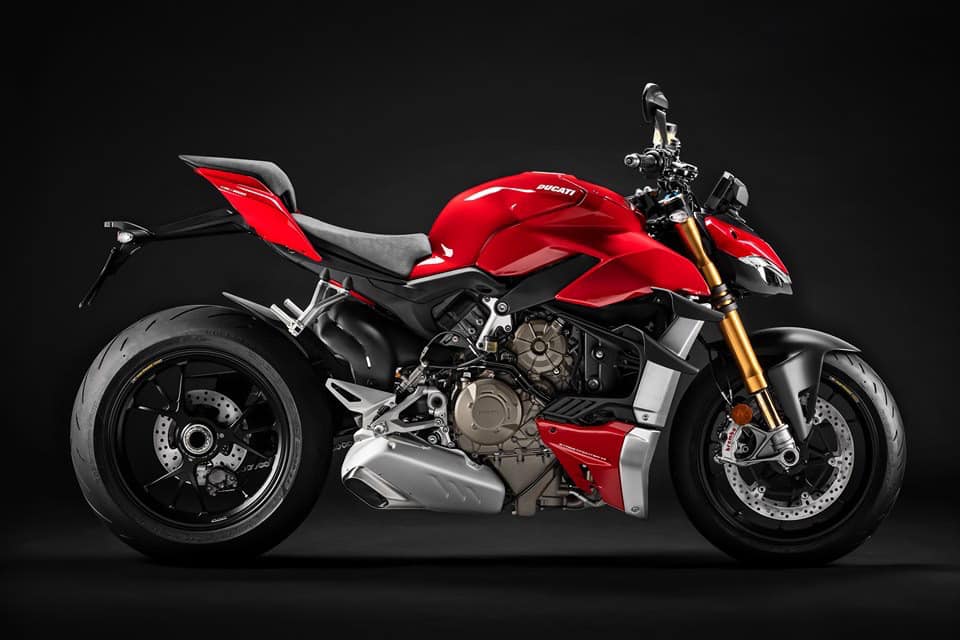
- Published in Motorcycle Review
MV Agusta F4 RC First Test Ride Review
MV Agusta F4 RC First Test Ride Review
We’ve nailed a real beauty here – The first ride of an MV Agusta F4 RC by anyone outside of MV itself. At least, we are as far as we can gather media-wise, which can’t be a bad effort, can it? Yep, we got our hands on one before anyone else, anywhere. Us FB cats have truly had our cream…
So, let’s see – 212bhp, 111Nm of torque, 175kg, the finest carbon fibre and suspension known to man, and looks to die for? Bring it on! What do we think of it? Well, the full test you can read in a future magazine (issue 303 out on June 23rd), but we’re happy to tease with a few thoughts on the most incredible F4 MV have ever produced. Thus, here are five observations on this little beauty.
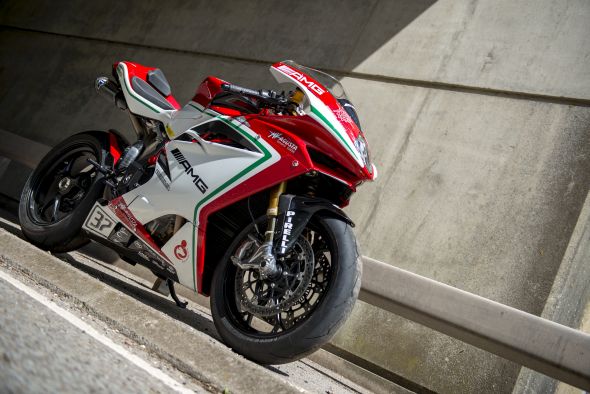
1 – It is unbelievably, jaw-droppingly gorgeous to behold – Okay, this is probably the easiest thing you could work out for yourselves, but even we were stopped dead in our tracks when we met it for the first time. The attention to detail is fantastic, build-quality has surpassed other current versions of the F4 (which was already top notch), and it really does merit its staggering asking price of a pound shy of £31,000 on looks and detail alone. This one had just begun the tentative transformational first steps into becoming a race bike, so had the achingly delicious full Termignoni titanium full-system fitted, as well as a few of the bits and pieces that come in the carbon-fibre race-pack box. Even the simple yet stunning rearsets are there to be admired, and the carbon fibre fairings are boss. It really is wondrous.
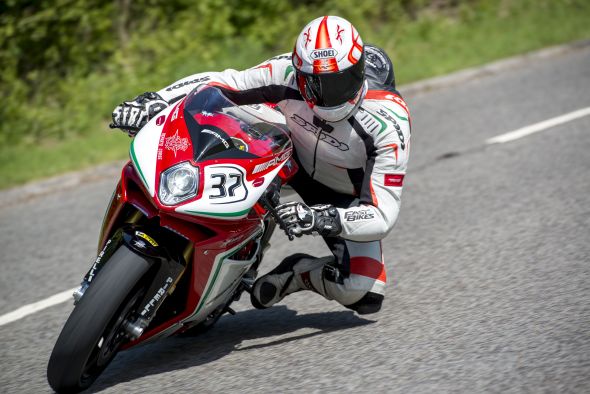
2 – It’s rather fast – With a claimed 212bhp (crank figure), you wouldn’t expect it to be slow and it certainly isn’t, oh no… The RC is surprisingly usable for what’s essentially a WSB machine on the road, but it’s when the tacho rises that you get your real kicks. And it’s further up the rev scale that it really impresses. When you’d expect it to start tailing off, it kicks in again hard like a steel-capped boot up the jacksie, screaming through those beautiful open pipes a rapturous cacophony that demanded anybody within a mile turned around and took notice. As eye-ball widening rides go, this is one that makes you go “Ooooh, shiii….”
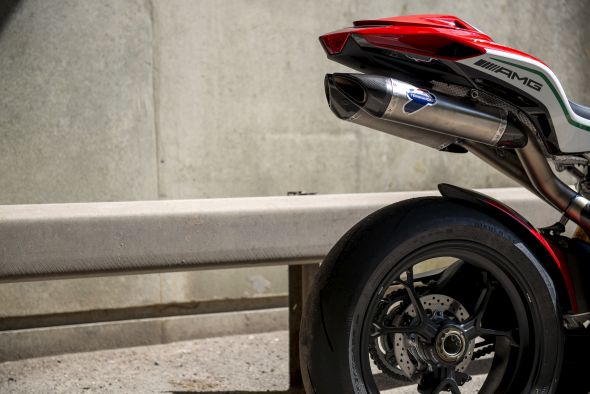
3 – You can really feel the weight loss – The RC is a solid handling bike, pukka geometry and Öhlins’ finest ensure that, but it’s the diet notching it down to 175kg that really shines through. The latest F4s all handle really well, but this one adds a previously missing flickability to the solid cornering skills. Chuck in a wonderfully intuitive riding position allied to super responsive input ratios, and you have a bike you’d happy ride on road or track every day for the rest of your life.
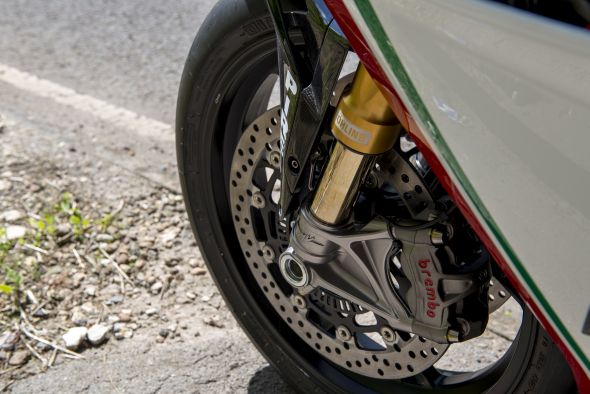
4 – It’s got real character – Traditionally firing inline four cylinder machines suffer from a slight lack of character during these days of cross-pane cranks, V4s, blaring triples and huge thumping twins. Not the RC, it lives and breathes, kicks and screams in a way a Suzuki GSX-R or Honda Fireblade can only dream of. Even the bolshy BMW S 1000 RR, while bonkers, is a dweeb sat alone in the corner of the wine bar, compared to the RC which is making every woman under the roof swoon, while arm-wrestling anyone who fancies being humiliated by the smartly dressed, dashing cad. You drink in its essence sat onboard, it talks to you, flatters you just by sitting on it – it’s an overwhelmingly incredible experience. It doesn’t even sound like any other inline four around, it rocks to its own beat, and that beat is terribly catchy.
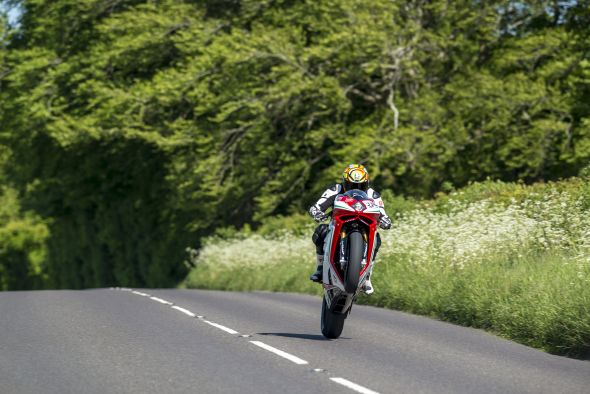
5 – They’re all sold out – At least, we think they are, there may be one or two somewhere around the globe but you’d better be bloody quick if you just happened to find £31k behind the fridge and want one. And, why wouldn’t you?! Otherwise you’ll have to wait until one comes up for sale, which could be a while. Only 250 are being made and a lot of those will end up on race tracks, like this one from Hampshire MV will at a BSB circuit near you soon. The rest will go to MV aficionados, collectors and those lucky (read – rich) enough to snap one up. Nope, we don’t like them any more than you do! 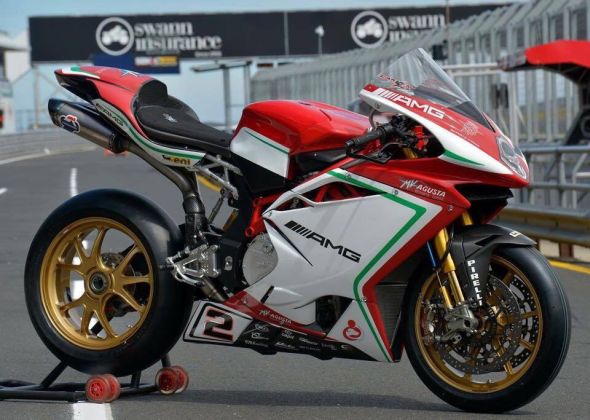
Click on the link below to view MV Agusta parts
Source: Fastbikesmag
- Published in Motorcycle Review
Ducati Monster 1200R First Ride Review
Ducati Monster 1200R First Ride Review
The letter R is sacred to Ducati. Should a Ducati come with an R at the end of its title, you know you’re in for something a bit spesh. Ducati doesn’t just throw the R around like dollar bills on a Saturday night. Panigale R, 1098 R, 996 R, these bikes have earned their place in the pantheon of special Ducatis.
Until now, the R moniker was limited only to track-ready weapons, but the super naked class has dawned full of machines that would wipe the floor with superbikes from not so long ago, and has spurned the Bologna boys into creating this, the Ducati Monster 1200 R – the most powerful nakedbike ever to come from Italy’s Borgo Panigale region.
This is the second new Monster in two years. The original Monster 1200 S missed the mark, judged as being too much road and not enough track against circuit derived bikes like the BMW S 1000 R and Aprilia Tuono – the 1200 R goes some way to rectifying this. Ducati is aiming this machine at the fast canyon, occasional trackday rider, the guy that knows what he’s doing in either circumstances but doesn’t need a Panigale to do it.
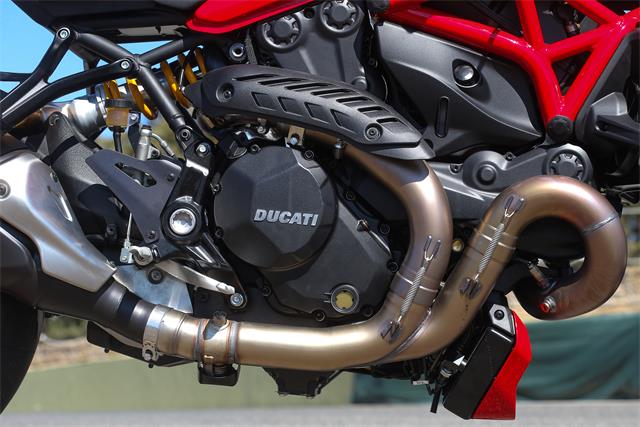
More compression, bigger throttle bodies and a new exhaust have boosted the power to a claimed 160hp.
Compared to the 1200 S, Ducati has upped the 1200 R’s 11° Teststretta’s power 15hp to a claimed 160hp at 9250rpm and increased torque by a claimed 6Nm to 97lb-ft at 7750rpm via new 56mm throttle bodies (up from 53mm), increased compression from 12.5:1 to 13:1 and increased exhaust header diameter a whopping 8mm to 58mm, matching the lot to a revamped but more aesthetically pleasing double barrel muffler. The new exhaust helps bring the 1200 R’s engine in line with Euro 4 emissions requirements, a target every new bike will now be required to meet.
The engine improvements are met with chassis details that have transformed the Monster’s handling from a machine that was out of its depths on the track to one that’ll ham trackdays with the best nakeds out there. Gorgeous black Öhlins forks grace the front – a rarity for any production bike as Öhlins, like we all know, come in gold – matched to an Öhlins rear that has helped raise the bike by 15mm. The new suspension doesn’t give the front any more travel, which is kept at the 1200S’s 130mm, but the rear now gets an extra 7mm of travel to 159mm. There’s also a nice little Öhlins steering damper mounted on the top triple clamp staring you in the face if you happen to like wheelies – which the 1200 R is very, very good at.
Perhaps most telling of all is Ducati’s decision to fit a 200-section rear tire over the 1200 S’s 190 fitted to Marchesini forged aluminum wheels. This little bit of extra tire, combined with more rear wheel travel and ground clearance, means Ducati is claiming 50° lean angle with the Monster 1200 R – who’d have thought only a few years ago we’d even care what lean angle the Monster would get?
Topping the list of changes off are new race-style footpegs (not rearsets, they’re still on a spring), a slightly forward biased riding position and styling updates that include that delectable rear seat unit design that’s now almost devoid of clutter between the number plate and wheel, new side radiator guards embossed with the all important “R” and red stitching down the side of the seat (the passenger’s half of the seat hides under a flimsily-secured cover that doesn’t match the R tag or price of the machine).
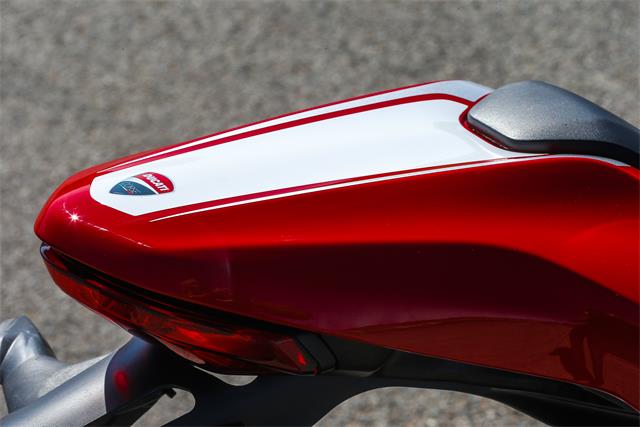
Ducati has worked hard to give the Monster R a racy-looking bum.
The chance to explore these new improvements to the Ducati Monster 1200 R came at God’s Own Racetrack, Ascari, about a two hour drive from Malaga in southern Spain. When I die, provided I’ve been a good boy, this is where I’m headed. This is one of the finest ribbons of racetrack on the face of the planet, a private paradise of speed with every imaginable corner and bend and nip and tuck you’d ever want to ride. Now, I’ll admit here it was a shame not to take the 1200 R on some of nearby Rhonda’s mountainous bends, but that’s they way it is, so we’ll have do with Ascari and a track only comparison. What a shame…
But Ascari is probably the closest track I can think of with corners that we’d experience here in the States – big style canyon sweepers, tight off-camber decreasing radius down hill passes and speed days.
Back when I last tested the 1200 S Monster in Australia last year, I surprised myself by saying this was the first time I’d ridden a bike that I preferred to keep in Touring rather than the full Sport mode. The throttle was too abrupt, too snatchy in Sport, so it was good to see those larger throttle bodies and increased compression has made the Monster much more tractable off the bottom of the throttle. Rather than being met with a punch in the face when you snap the throttle open, now you get smooth, strong drive that’s not only easier to modulate but doesn’t upset the chassis as much on the side of the tire. The 1200 R’s claimed extra 15hp are one thing, but I’ll trade them for a nicer throttle than the 1200 S’s. Happily, you don’t have to. You get both!
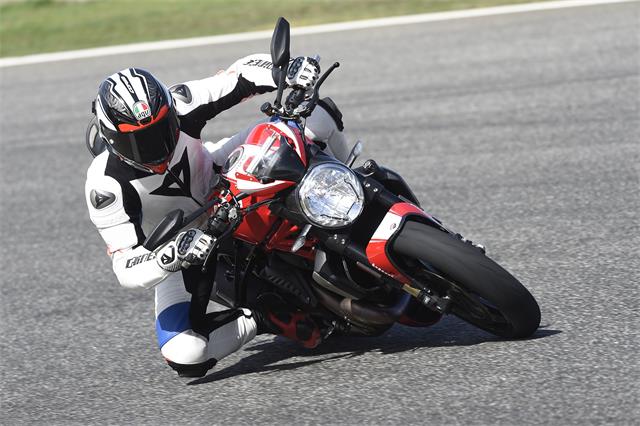
More ground clearance makes track riding much more fun than on a 1200 S.
The slightly increased compression has given the Monster extra hair on its chest through the midrange, with a touch more top-end grunt when you’re really going for it. Snap that throttle open anywhere from 5-8000rpm and you’ll get plenty of DTC (Ducati Traction Control) inducing grunt as you let the electronics take over. Bring on the hate mail if you will, but traction control is now so good you can slam the throttle open at points of the corner that would otherwise send you on a one way ticket to the moon.
But one of the big omissions, especially considering the price of the 1200 R relative to the competition, is the lack of a quickshifter. Considering it’s now at the top of the money pile, I’d have liked the R to come with one as the gearshift is not the smoothest I’ve sampled recently. It’s by no means bad, but its omission from standard equipment is a mark against the bike.
The extra torque means a more flexible desmo, an engine that’s now got hardly any weak spots. Smooth initial throttle, plenty of midrange torque for corner-to-corner zipping and a bit more up top – happy days. But that’s not the most impressive thing about the 1200 R, that honor goes to the chassis.
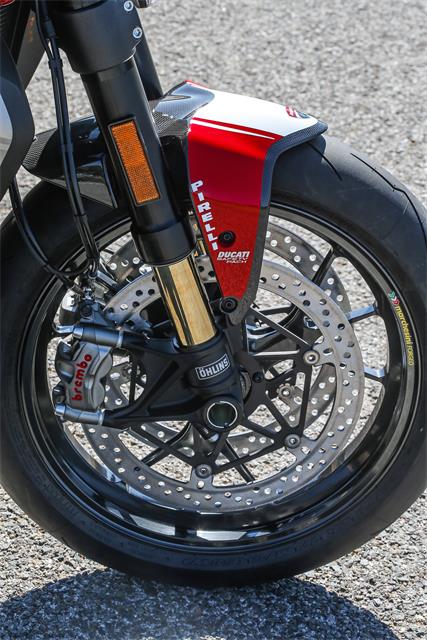
Gorgeous black Öhlins hint at the R being the special one…
The issue with the 1200 S was never the engine. Yes it’s nice to have the aforementioned improvements, but where the S lacked was its sluggish, heavy steering and limited ground clearance that would have you dragging the pegs way too early in a corner. The 1200 R has gone a long way to correcting this and now steers with the precision the S should have had all along. The extra 15mm of height thanks to the revamped front and rear Öhlins means you can be a lot more aggressive on corner entry, throwing the Monster from side to side easily without feeling like you’re riding a grinder. The wider 200-section rear tire gives the 1200 R a sure-footed feel in the middle and exit of the corner – it’s interesting that Ducati has made the 1200 R steer better with a wider rear tire than the 190-section used on 1200 S.
The Monster has always been styled by the shape of the tank. Cast your mind back to any Ducati other than one that starts with the letter M and you will not see another tank like it, so this was something chief designer Gianandrea Fabbro tried very hard to maintain the looks of. The new 1200 R’s tank is a touch more svelte than the S’s but it’s got deeper knee indents to allow a better tuck on the track. This, combined with the slightly more forward-mounted and higher bars gives the 1200 R a bit more of a motard feel, giving you more room to move and making the chassis more maneuverable in corners.
We were spoiled a touch at Ascari as we had Ducati test rider Alessandro Valia set the clickers for us for the morning and afternoon sessions, so the Monster was pretty much as good as it could be with stock suspension, so we’ll have to wait until we get a road test unit to see how it handles on anything other than billiard smooth tarmac with settings picked by the Ducati test rider…
So now we come to the $18K question – is the new Monster now top dog in the super naked category. The answer, simply, is no. Having just completed our super naked shootout a couple of weeks ago, I can safely say it wouldn’t knock the Aprilia off its perch as the reigning king. But that’s not to say it is not a great bike, because the Monster 1200 R is far better than the 1200 S it now stands in front of on the spec sheet (not replaced, you can still buy the S), and it’s not a race derived bike like the top two that finished up in our comparo test. There are parts of the Monster that are disappointing – no quickshifter, that seat cover, and electronics that are annoying to change base settings on, like the KTM) – but these are off-set by the deft touch of the traction control system, the beautiful swooping lines of the tank and those oh-so-sweet black Öhlins forks. And it has become a very handy track machine.
Ducati has done exactly as they planned with the 1200 R – keep the road-based traditions of the 21-year-old Monster lineage but upgrade the bike to such a level that it’s no longer out of its depths on the track. I have no doubt this will make an excellent road weapon (that extra ground clearance especially will work wonders when hitting potholes), and the Monster has something not one of the leading nakedbikes have – that inimitable Ducati style – which on itself will bring buyers to dealer floors.
The price is right up there, but you’re getting a very good bike for the money.
Click here to view our Ducati Monster 1200 performance parts & carbon fibre
source: cyclenews.com
PHOTOGRAPHY BY DUCATI MOTOR
- Published in Motorcycle Review
MV Agusta 800 Dragster RR Review
MV Agusta 800 Dragster RR Review
“Yes, it goes as well as it looks!”
Overall Rating 4 out of 5
Yes this blinged-up version of the Dragster variant of MV’s 800 Brutale is expensive, but then it’s truly special, too. There are cheaper bikes, more manageable bikes, even faster bikes in the same category but this one is special. And yes, it’s not 100% perfect and certainly not for everyone, but just look at it! And it goes as well as it looks!
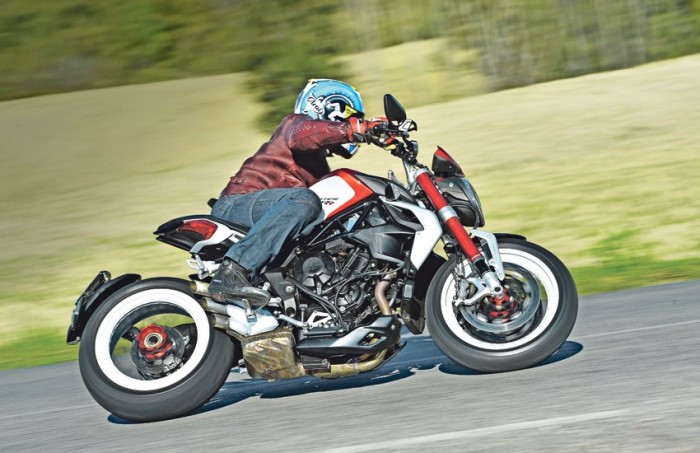
Ride Quality & Brakes 4 out of 5
If the power delivery is a little aggressive, then so is thew Dragster RR’s handling. Twitchy is the word. MV is obviously aware of this and have added a top yoke steering damper. There was never an alarming almighty slap, but I had more than a few twitches on the narrow bumpy Italian roads. The wheelbase is short, it’s a light bike with a firm set up and lots of power, it was always going to be a little lively.
My only other gripe was the ride is on the firm side. I got thrown out of the seat on the odd occasion, the bars shake a little and you get hammered by the hard forks which aren’t absorbing the huge bumps. In MVs’ defence the roads were really bad and I was hitting them hard like a Greyhound that had just been released from the trap, I simply couldn’t ride slowly. On smoother roads it worked far better.
Engine 4 out of 5
MV have upped the triple’s performance from 125bhp to 140bhp by increasing the size of the air-box, improving the exhaust flow but more importantly revising the fuelling, which now with two twin injectors per cylinder. They’ve also tried to smooth out the power delivery amd make the torque more linear, which was a criticism of the old bike and they’ve done just that.
The old 800 had bags of attitude but was hard work and aggressive. But this engine is a peach. Fire up the 800cc triple and there’s a real rasp. It sounds lovely, revving quickly with aggression. Combine that with clutchless gear changes and intoxicating noise it’s hard not to thrash it. You end up attacking roads not riding them.
“Click the link below to visit our MV Agusta shop!”
Build Quality & Reliability 5 out of 5
These pictures don’t really do the bike justice, you have to see it in the flesh to get the full impact; but be warned you’ll want one. The finish is outstanding, the paintwork looks handcrafted, the top yoke is lovely. Imagine casting an admiring glance over this MV every time you open your garage door, you’d smile every time
Insurance, running costs & value 3 out of 5
There’s no getting away from the fact that this is a helluva lot of money for ‘only’ an 800. But there’s also nothing else quite like it (although the Brutale version is a little cheaper and possibly more useful). Possibly the ultimate middleweight poster bike. Insurance group: 17 of 17
Equipment 4 out of 5
There’s not just three rider modes; Rain, Normal and Sport, there’s a quick-shifter, traction control, slipper clutch and top notch cycle parts everywhere you look, such as the amazing Brembo stoppers which lure you into taking huge liberties. Straight line braking is immense; just grab a handful of lever and let the electronics do all the work.
It’s impossible to lock either wheel and impossible to stoppie, you won’t be thrown over the bars due to the rear wheel lift intervention. It’s one of the best braking bikes on the market, period.
By Adam Child
Source: MCN
- Published in Motorcycle Review
Ducati Scrambler Review
Ducati Scrambler Review
“Stylish, easy to ride, desirable and affordable”
Overall Rating 4 out of 5
You don’t have to be a fashionable hipster to enjoy the new Ducati Scrambler, its qualities shine through without the clever marketing. It’s easy to ride, small and light, has a lovely useable air-cooled V-twin with lots of low to mid-range power. There’s some lovely attention to detail, it’s stylish and, at under £7000, an affordable Ducati. Experienced hands may want a little more power and noise, but everyone else will love it.
Ride Quality & Brakes 4 out of 5
Despite the odd wheel sizes (18 inch front and 17 rear) and off road-looking Pirelli rubber, the Scrambler can hold its head high and punch well above its weight in handling terms. It’s relatively light and nimble and the wide, retro bars enable you to throw it around with ease.

Engine 4 out of 5
There’s an all-new 803cc, air-cooled, motor which is based on the old 796 Monster unit. The bore and stroke has remained the same but valve overlap, injectors, air-box and exhaust are all new. The result is 75bhp and 50.2ftlb of torque – slightly down on the old Monster but the spread of torque is greater. Power starts from low down, is linear, more than enough for this type of bike, but it does lack a little top end rush for experienced hands.
Build Quality & Reliability 4 out of 5
The level of finish is very high considering the price – there is some lovely attention to detail. Ducati have also worked in partnership with reliable quality brands like Brembo, Pirelli and Kayaba. Reliability shouldn’t be a problem as the motor is based on the proven 796 Monster.
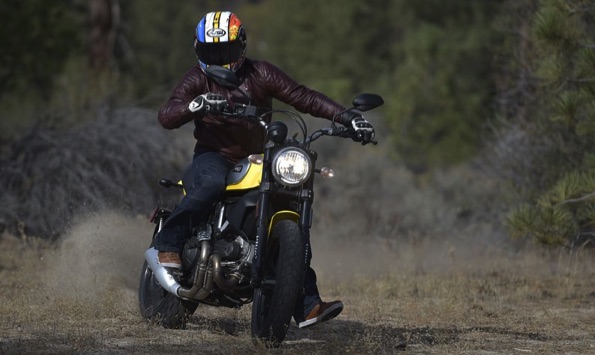
Insurance, running costs & value 5 out of 5
The base Icon comes in at under £7000 which is exceptional value for money for a desirable, quality, good looking Ducati. In many ways it doesn’t feel like an entry level ‘budget’ Ducati, you’d estimate the price to be much higher.
Equipment 4 out of 5
ABS comes as standard but that’s it in terms of rider aids. It’s relatively basic but is designed to be at a competative price. The Kayaba suspension only has pre-load adjustment, and there’s only a single brake disc up front, but it’s controlled by a huge radial Brembo caliper.
Source: MCN
Click on the link below to view our Ducati Scrambler parts
- Published in Motorcycle Review
2015 New Triumph Street Triple RX
2015 New Triumph Street Triple RX, The naked middleweight market has been dominated by Triumph’s Street Triple ever since it first launched in a maelstrom of surprise and giggling back in 2007.
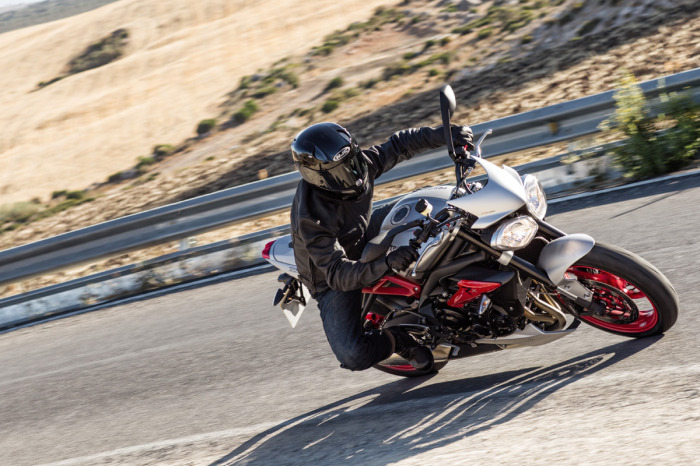
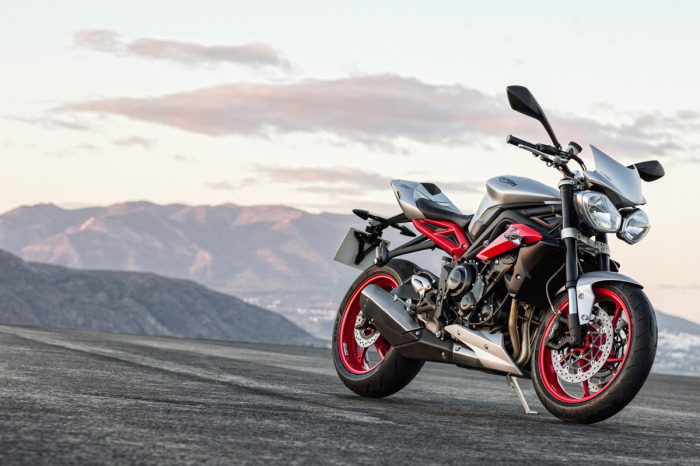
The R model only added to the depth of the naked’s talents, and both models continue to attract a seemingly inexhaustible stream of new buyers.
For 2015 they’ll have even more temptation to try and resist, as the firm adds an X to the model designation.
Blending the brilliance
This isn’t just a bit of paint and a new decal, the headline change for the RX is the junking of the old tail unit, to be replaced by one from the Daytona 675R. It’s such an obvious mod that you have to wonder why they didn’t do it earlier.
The sleeker new silhouette is accentuated by the new Matt Silver paint and deep Diablo Red colouring of the lightweight race inspired wheels. Triumph’s accessory seat cowl, belly pan and fly screen are standard fitment, and complete the aesthetic overhaul.
The heart RX remains Triumph’s signature 675cc triple, a 12-valve unit derived from the Daytona sportsbike, which has been mildly retuned to deliver a punchy 105bhp and 50lbft of torque. There’s still nothing wrong with the motor, and being wisely conscious of that Triumph have left it well alone for 2015.
The new Street Triple RX will be available in dealerships from January 2015. Prices are yet to be confirmed, but we would expect only an incremental price increase over the existing R model’s £8149.
Engine
Triumph have not messed with the existing Street Triple R unit, meaning a 105bhp 675cc inline-triple, which is more than capable of tempting you and the RX into plenty of mischief.
Chassis
The front end of the bike is unchanged, while the rear subframe and seat unit are stolen directly from the Daytona 675R, giving the RX a sharper and sleeker rear end.
Electronics
The only new addition to the RX is the provision of the accessory quickshifter as standard fitment – making it even easier to get through to sixth on the back wheel.
Brakes
The R’s Nissin radial 4-piston calipers carry over to the RX, also with the switchable ABS system – all biting on to a pair of 310mm floating discs.
ORIGINAL STORY
If the decal on the side panel is to be believed, this is the new Triumph Street Triple RX, which MCN expects to be unveiled at the Intermot show in Cologne, Germany, tomorrow.
Spied undergoing a test at Cadwell Park in Lincolnshire two week’s ago, the model is clearly an interim update or special edition, rather than a new version of the massively popular triple.
Already a sales success for Triumph, the Street Triple has featured in the UK’s top ten best sellers consistently since its launch in 2007, and subsequent 2013 update.
This new version will only help it stay there, with its aggressive R styling, and the addition of a new subframe and tail unit, seemingly directly lifted from the Daytona 675.
Fitted with a flush-mounted cowl, it almost looks like a single seat unit, but the rear pegs reveal that there is a pillion perch hidden beneath.
Also visibly different is the colour of the Nissin radial brake calipers, while the units themselves appear to be identical to the existing Street Triple R’s.
- Published in Motorcycle Review
2015 New BMW S1000RR
2015 New BMW S1000RR, BMW’s superbike rivals must be wondering just what they have to do to keep up as the German firm reveals a completely new, lighter, more powerful and even more advanced version of the S1000RR; a bike that already dominates the class.
The 2015 S1000RR is the first completely new version of the bike since the original appeared in 2009; the 2012 overhaul being merely a bit of a polish up in comparison and it has distilled five years of racing and road bike experience to bring these changes to the new bike.
Nobody ever stepped off an S1000RR yearning for more power or less weight; but now they have both in the form of 199bhp at a searing 13,500rpm and a belting 83.3lbft torque, while the weight has dropped (even with all of the electronics and ABS system fitted) from 209kg to 204kg fully wet.
At the heart of the claimed 199bhp are changes including a newly-engineered cylinderhead, a new intake camshaft and lighter intake valves.
The airbox has been changed for a larger capacity and shorter intake lengths, while the all-new exhaust system ditches the front underbelly silencer to contribute to a 3kg weight loss. A lighter battery sheds another kilo from the total, too.
The frame changes are also comprehensive. The twin-spar aluminium alloy frame is both stiffer and lighter and gets new geometry with new steering head angle, wheelbase and a new swingarm pivot point.
The new S1000RR can also be specified with an updated version of the semi-active BMW Dynamic Damping Control (DDC) suspension system.
In terms of the electronics, BMW have fitted three standard modes of Rain, Sport and Race. They can be supplemented by the Pro riding mode option to give a further two, track orientated modes of Slick and User. Pro riding mode also offers launch control and a programmable pitlane speed limiter.
There’s also include a quickshifter for faster gearchanges both up and down the ‘box. The traction control has been recalibrated to work with the ABS and uses lean angle sensors to further improve the safety systems.
The S1000RR even gets optional cruise control and heated grips, along with a new LCD dashboard.
New S1000RR electronics
The BMW S1000RR set the standard for the superbike class when it was launched in 2009, but the challenge from the Ducati 1199 Panigale and Aprilia RSV4 has been hard fought. BMW are aiming to take the top step again with the 2015 S1000RR, which gets a host of new electronic rider aids.
Standard fit electronics include the three riding modes of Rain, Sport and Race as well as Automatic Stability Control (ASC) with a lean angle sensor. Add the Pro riding mode as an option and you get Slick and User modes along with Dynamic Traction Control (DTC), which adds the banking sensor and seven stages of traction control intervention.
The different riding modes modify engine power and torque, traction control and suspension set-up and ensure the ABS system is matched in the best way for the conditions. The optional User mode means the rider can tailor all of the different electronic settings to their own tastes.
Engine
Significant reworking of the 999cc engine has resulted in a 6bhp boost at peak, thanks to new intake cams, lighter valves, a new airbox and an all-new exhaust system – which also sheds 3kg.
Styling
The asymmetrical face of the RR has been reversed for 2015, while the whole package has been lightened and sharpened.
Electronics
A raft of features have trickled down from the HP4, and the new bike gets semi-active suspension, second generation traction control and quickshifter, and new riding modes.
Chassis
The biggest change to the new frame completely revised back section, adding more flex around the swingarm pivot to improve drive, mechanical grip and feedback.
ORIGINAL STORY
BMW have confirmed that they will release three new models at tomorrow’s Intermot show in Cologne, Germany.
Amongst the three is expected to be an all-new S1000RR, boasting new chassis, new bodywork, heavily revised electronics and strong rumours the engine has undergone the same level of development.
Not only will the new bike represent a serious increase in performance over the current model, it will also eclipse the spec of the firm’s flagship HP4, which will cease to be a part of the model line-up in 2015.
More power, more control
The new RR has still not been seen completely without any disguise, but with several very clear spy shots to work with, MCN commissioned this digital rendering (red and white S1000RR) to show all the design elements of the new bike.
Tomorrow we’ll see how close we are to the real deal, but this is as close as we can get to a photograph of the finished bike.
What can’t be seen in the spy shots is the rumoured engine work, which our European factory source suggests has been significant.
The net result is expected to be a hike of ‘five or six’ bhp at peak compared to the out-going model, meaning that the new RR will boast an output nudging 200bhp in standard tune.
While the crankcases look to be near-identical between the existing bike and the test mules, it’s thought that all the development has gone into the cylinder heads to achieve the power boost, in conjunction with a complete new exhaust system.
Power is nothing without control though, and BMW is continuing to use the S1000RR to showcase its technological prowess.
With the HP4 being discontinued for 2015, the RR is expected to benefit from everything that model had to offer, including the ‘cornering ABS’ which became available on the HP4 just a few months ago.
The system, developed by Bosch and also used by KTM on the 1190 Adventure, enables the rider to brake heavily mid-corner without tucking the front, or causing the bike to stand up.
This system will be linked to the RR’s rider modes and the HP4’s semi-active suspension (dynamic suspension system DDC), which is also expected to become standard fitment.
With chassis mods aimed at delivering more flex around the swingarm pivot for greater feel and connection between the back tyre and the tarmac, and the increased control offered by the suspension and electronic improvements, the RR is certain to widen the existing gulf from its competitors.
Expected changes
Chassis
The RR appears to have a new frame, and the clearest indication is around the rear section. The expectation is that more flex has been dialled in to increase connection
and drive.
Front cowl
The biggest change to the styling of the new RR can be found in its face. BMW appears to have reversed the asymmetrical headlamps compared to the 2010-14 models, while also adding a beak at the base of the cowl, which we have also seen in spy shots of the sport-touring version of the S1000, which we believe will
Electronics
What is impossible to identify from the spy shots is the level of electronic development on the RR., but we’d expect all the HP4’s functionality, and second generation traction control.
Exhaust
One of the first new details that emerged from the spy shots was a new exhaust system. The first image showed an aftermarket Akrapovic version with twin exits, while the most recent shot shows the new exhaust to be a more conventional unit, but more trapezoidal in shape.
Rearsets
The first two spy shots show the 2015 bike has new rearsets to go with the new main chassis. BMW’s Gear Shift Assistant (quickshifter) is visible in the shots, and we know the firm has been working on a new version – likely to be fitted to their flagship sportsbike.
Fairings
The spy shots show completely new bodywork on both sides, while maintaining the bike’s trademark asymmetry. BMW is clearly keen for this new model to look like an evolution, not revolution, building on the existing bike’s popularity, but maybe missing the chance to appeal to a new pool of buyers.
Brakes & Suspension
The 2015 bike is expected to get the new version of Bosch’s cornering ABS, which was made available on the HP4 earlier this year.
Dubbed ABS Pro by BMW, it will be standard fit on the new RR, and will communicate with semi-active electronic suspension, and multiple rider modes, including a new rider-set mode.
- Published in Motorcycle Review
Matt Brown’s visit to the NEC show November 2013
The penultimate week of November saw Motorcycle Live return home to the Birmingham’s NEC, filling three of the biggest halls with all that’s great within motorcycling. All the major manufactures were there, with the notable exception of MV Augusta, who were present at last year’s show. This was a little strange as MV have several new models out for 2014 including the Turismo Veloce Lusso 800, a tall-rounder aiming to take sales away from the Ducati Multi Strada and Aprilia Caponord; and their new hyper naked set to do battle with the new Monster 1200, KTM Duke 1290; the Rivale 800.
Like last year, along with all the static displays, there was lots to see and do including the live Crank’d stunt show, electric kids bikes supplied by Kuberg, the Yamaha off-road experience and not forgetting the ACU Try Trails area and the Test Ride Zone. The Behind the Bars movie was shown at regular points throughout the day and the very popular Get On Zone which is aimed at getting more people interested in riding returned for another year.
Instead of queuing with the masses, this year I was able to utilise the press area and was able to sit down, relax and plan my day. I was trying not to get distracted by the star riders who started filtering past, but it’s still funny to see John McGuiness pulling his stuff along, or Sam Lowes the new BSB champion casually drinking his Starbucks. Just before the doors opened at 10:00, I sneaked through the press door and got my first look of the show. Some exhibitors were putting the final touches to their stands, making sure everything was neat at tidy. A few were giving some team talks and Kawasaki were having photos taken of their team. It was the going to be a busy day and the start of a busy week.
Ducati
Thankfully, Ducati had a much bigger stand than last year. The number of bikes on display was about the same and in typical Ducati style, their flagship Sportsbike was taking centre stage. Two £60,000 invite only 1199 Sugerleggeras were sat on a revolving platform that displayed the bike in street trim and naked form. It really is a beautiful bike and the fact it puts the already stunning 1199R to shame, goes someway to explain its astronomical price tag. Making its UK debut was the new 1200 Monster with style cues that hark back to previous versions, the bike is clearly part of Monster family and comes fitted with an exciting exhaust system that snakes its way around the front of the bike. Possibly the most anticipated bike on the Ducati stand thou was the 899. Filling the successful shoes vacated by the 848, the 899 had already received its UK premier at the final BSB round at Brands Hatch and is already available through their dealers. Other bikes on display included the Hypermotard, Hyper Strada, Diavel Strada, 696 Monster, the 1199 Panigale R and a new stealth black version of the 1199S.
Kawasaki
The Kawasaki stand was heaving, so they must be doing something right. With the usual display of race bikes, including Chris Walkers new 2014 GB Moto machine, this year the Kawasaki full range included the new Z1000, which although is possibly the ugliest bike of 2014, is by all accounts really rather good. There really is something about Kawasaki Orange thou which I can’t quite put my finger on. The updated Z800 was getting lots of attention and so were Kawasaki’s new range of Scooters and the retro W800. Although practically unchanged, the ZZR 1400 was getting its fair share of admirers as well, but then that’s to be expected given its performance qualifications.
Honda
Honda remain the world largest bike manufacturer and judging the amount of space they were using, it really shows. Bringing back the Honda My first licence for children and an impressive café area, Honda filled their stage with an impressive range that included their updated Fireblade, the CBR600RR and they also had a comprehensive number of smaller bikes and scooters that included the Integra and the updated CBR300R. The new bikes didn’t stop there with Honda unveiling the CB650F, the Goldwing based CTX1300 and for me, the most important bike at the show, the new VFR800F.
BMW
BMW arrived at the NEC celebrating their 90th anniversary. Part of their space was taken up solely with models from their past, which included classics, Dakar bikes and even a K1. The pride in the race success of the S1000RR was also clear to see, with a collection of this year’s race bikes.
BMW also had one of the most hotly anticipated bikes on their stand and that was the S1000R, the naked version of their Superbike. It was getting a lot of attention, but people seem to forget that BMW already have a ballistic naked bike in their range, the K1300R, which I’m still very much a firm favourite of. With a couple of revised bikes like the new GS being classed as new for 2014, apart from the S1000R the only other new bike was the Nine T. The idea with this bike is that the owner is able to have the bike they want with a variety of bolt ons to suit its requirements. As a result in basic form, it’s a fraction underwhelming, but when you look closer at the bike and notice a BMW logo smack bang in the middle of the headlights, you know a lot of thought has gone into the bike.
Best of the rest
Say one thing about the big HD, they know how to put on a show. Celebrating 110 years HD displayed a small range of bikes charting their history. Although not a cruiser rider, some of these bikes were amazing. I may struggle to ride one, but I certainly wouldn’t mind having one in the house just to look at.
All the attention at the Yamaha stand was directed towards the XV950R, their take on the custom cruiser and the all new MT-09 and 07s. Despite not changing either the R6 or the R1, people was still queuing to get on board and squeeze the levers and the Yamaha stand was filled out with their range of scooters and other bikes including the V Max.
Where to start with Suzuki? Well, as far as I could tell the only new bike for 2014 was the V Strom 1000, which is a brand new model that is re-launching an old name. Their stand will filled with several bikes that are continually being revised such as the Hayabusa, the SV650 (you remember this, used to be called the Gladius), the Inazuma 250, the Intruder cruiser, which has the worse name of any bike on the market as well as the now obligatory collection of scooters. Their hospitality area did have some really nice race bikes on display but I left their stage feeling like I had already seen this range of bikes three years ago, which is sad, because they do make some great bikes. The only area of note was an area dedicated to their GP motorcycles which included the new MotoGP machine and a Kevin Schwantz racer.
KTM were again at the show. This year they brought the balls out crazy Duke 1290; a bike so mad that the prototype was named The Beast. The newish KTM Adventure was very popular with riders looking for a viable alternative to the GS, but for me, the most exciting bikes on their stage were the new RC125, 200 and 390s with sit in their Sportsbike family underneath the RC8R. Despite being clearly great bikes that look like a lot of fun and that I actually really liked them, I have to question the reasoning behind these. I can understand the 125 which will go head to head with the likes of the Yamaha R125 and the Honda CBR125R and will make a great first bike, but why produce two bikes in the 200 and the 390 to go head to head with the new Honda CBR300R and Kawasaki’s Ninja 300. The rest of the stand as expected, paid homage to their off road machinery.
Other bikes on show were supplied by the likes of CCM, Royal Enfield, Husqvarna, Norton, WK, Lifan, Aprilia, Triumph, Gas Gas, AJP, Victory and most importantly Motorcycle Live announced the return of Indian. The Indian stand was absolutely buzzing with interest and with only a very limited range of bikes available, they are taking HD on at their own game and have produced some absolutely stunning bikes. Even as a devout Sportsbike rider, I could picture myself riding one across American. That is the power of a well designed motorbike.
- Published in Motorcycle Review
Ducati Desmosedici D16RR Review
Ducati Desmosedici D16RR Review,
There’s no other way to describe the Ducati Desmosedici RR than as a MotoGP bike with lights; it really is that close to the real thing. The 200bhp motorcycle is a replica of Ducati’s Desmosedici GP6 MotoGP machine, which Loris Capirossi and Sete Gibernau rode in the 2006 World Championship and features the same chassis layout, bodywork and ‘long bang’ 989cc V4 engine architecture. There has never been a road motorcycle like the Ducati Desmosedici RR and it’s so stiff, fast and focussed that it makes R1s seem soft and cuddly by comparison.
Engine:
Although devilishly powerful the Ducati Desmosedici’s V4 motor is far more docile and user-friendly than you’d imagine. It makes power smoothly from nothing all the way to 13,800rpm, although as the motor spins past 10,000rpm the power starts to get very intense. There’s bucketfuls of grunt on tap too, so much so that you can go a gear higher though corners and it’ll still pull hard. Like one of Ducati’s V-twin engines, the Desmosedici is deceptively fast, not like a screaming in-line-four superbike, which feels twice as fast as it’s really going.
Ride and Handling:
Unless you’re going to push the Ducati Desmosedici RR as hard as MotoGP rider can, you’re never going to get the best out of it. Such is the stiffness of the chassis that there’s very little feel from the Desmosedici RR even at fast racetrack speeds, although you get more feel as you start to push harder. On the road the Desmosedici is going to be a waste. Where a 1098 or R1 will flatter you with its user-friendly nature the Ducati is quick to tell you that you’re not good enough to ride it. It is the best handling road motorcycle ever built; you just need to be Casey Stoner to appreciate it.
Equipment:
The Ducati Desmosedici RR is built like a MotoGP bike so it’s dripping with exotic parts. The Desmodromic motor is packed with titanium, specially coated alloys and magnesium. The fairing, mudguard, heel guards, fairing bracket are all from carbon fibre and the exhaust heat shield is from a carbon/ceramic composite. The LCD display is the same as the GP7 MotoGP motorcycle and like the 1098 it comes with a datalogging facility. Marchesini wheels are forged magnesium and the rear is shod with a special 16-inch Bridgestone BT-01R tyre. The Brembo front brake set-up is the same as the wet set-up Ducati use in MotoGP and the front brake span adjuster is on the left handlebar for easy reach. The list goes on…

Quality and Reliability:
Like the MotoGP machine the Ducati Desmosedici RR is built to an exquisite level of quality; there’s simply nothing you can buy that comes close. Unlike the race bike the Desmosedici RR actually comes with a three-year warrantee and three-years free servicing, which is an astonishing feat from Ducati.
Value:
£40,000 is a lot of money for a motorcycle but the Ducati Desmosedici RR more than justifies its price tag; Ducati could sell it for a lot more and it would still be worth it. If you could imagine how much a car would cost that was this close to a racing machine? Probably millions, if it could ever happen, which it never would or could. Even if the Desmosedici didn’t run, the way it’s built alone would justify its price tag; the fact that it’s faster and better handling than any production sports bike ever built makes it the deal of the century. Find a Ducati Desmosedici RR for sale.
Insurance:
Insurance group: 17 of 17
Source: Motorcyclenews.com
- Published in Motorcycle Review




